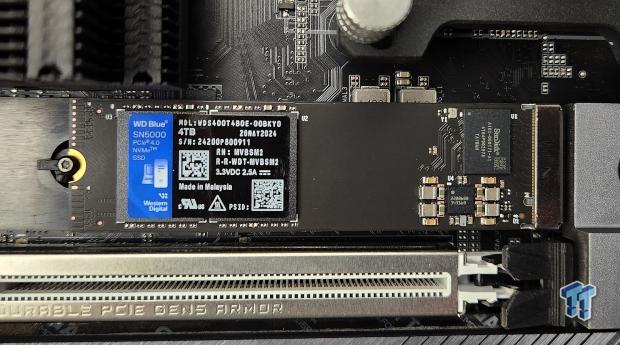
The Bottom Line
Pros
- + Single sded
- + Low power
- + User experience
Cons
- - Expensive at launch
Should you buy it?
AvoidConsiderShortlistBuyIntroduction & Drive Details
Today, Western Digital is expanding its mainstream portfolio. The new WD Blue SN5000 series brings its "Blue SSDs" into 5GB/s territory and expands on capacity, doubling it to a huge 4TB. Like its immediate predecessor, the SN5000 series is exclusively DRAMless and single-sided.
As stated, the WD Blue SN5000 Series substantially increases sequential throughput bringing its "Blue" into the 5GB/s territory, up roughly 1,000 MB/s from its previous 4GB/s class throughput. The SN5000 series gets there in two ways, BiCS 5 TLC and BiCS6 QLC. Capacity points from 500GB-2TB come arrayed with BiCS 5 TLC flash and when we get to the 4TB capacity point, we find faster BiCS 6 QLC flash being employed.
On the test bench today, we have the 4TB model. Even though it is arrayed with QLC flash, it is the fastest of the various capacity points and likely the most powerful as well. This drive is a masterful design as we see it, being single-sided, low power and cool running while at the same time delivering more than 5,500 MB/s throughput. This is the first time we've encountered BiCS 6 QLC, and it's looking good, maybe even fast enough for the 4TB model to serve as a legit PlayStation 5 M.2 storage expansion.
As we see it, the SN5000 4TB is set to compete with the Chinese-made Maxio MAP1602c controlled SSDs, such as the Viper VP4300 Lite 4TB. Now, at 5,500 MB/s throughput, the SN5000 gives up about 1,900 MB/s in throughput to its Chinese competition; however, as we all know, throughput in and of itself is not a measure of true performance - gaming and consumer workloads are where the true measure of real-world performance come into play.
Okay, let's get into the review to see exactly what this high-capacity single-sided SSD can do for you by the numbers.
Drive Details
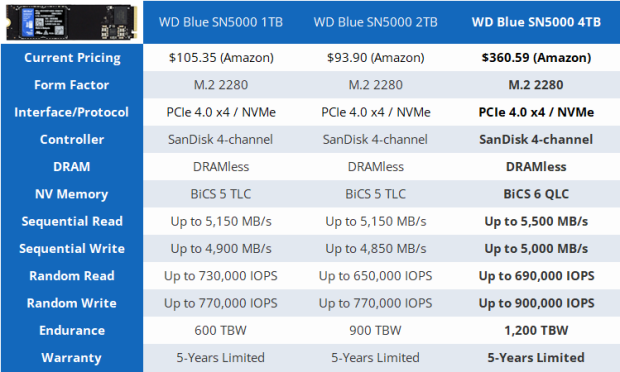
To us it looks like pricing is not currently settled. The 2TB costs less than the 1TB? That can't be right. Also, considering the competition's pricing, the 4TB price point seems to be a bit higher than it should be.
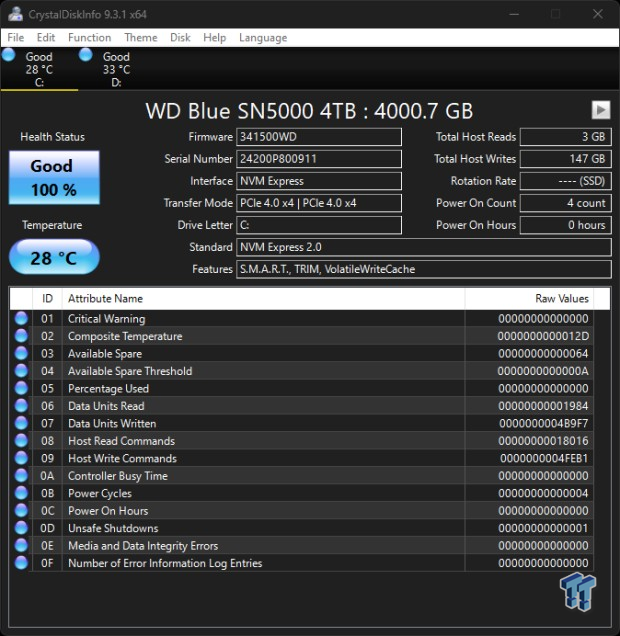
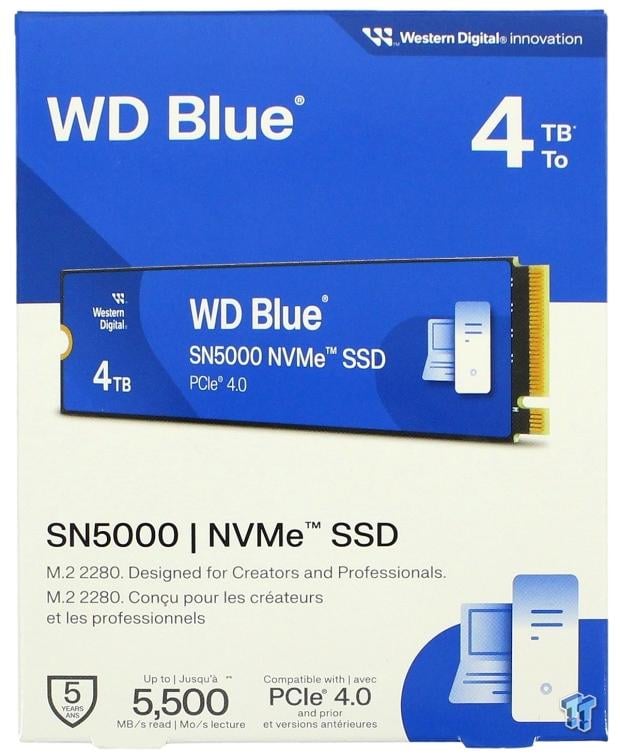
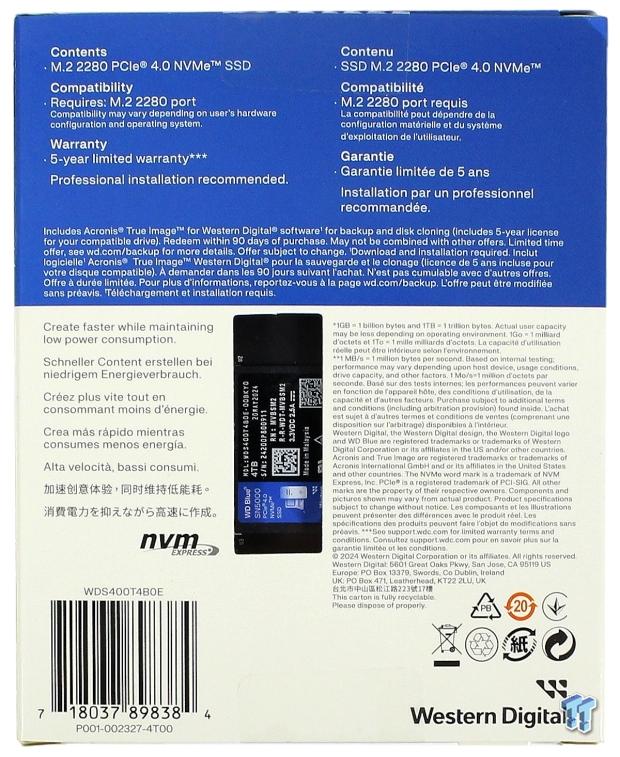


As it is with most Western Digital Storage products, WD offers its excellent toolbox software - Western Digital Dashboard, along with Acronis for Western Digital cloning software free with its SN5000 SSDs Click HERE to get both.
Jon's Test System Specifications
Intel Test System
- Motherboard: GIGABYTE AORUS Z790 Xtreme X
- CPU: Intel Core i9-14900KS - Buy from Amazon
- Cooler: Alphacool Eissturm Hurricane Copper 45 - Buy from Amazon
- RAM: Patriot Viper Xtreme 5 8000 48GB - Buy from Amazon
- Graphics Card: MSI SUPRIM X RTX 3080 12GB - Buy from Amazon
- Case: PrimoChill's Praxis Wetbench - Buy from Amazon
- Power Supply: be quiet! Dark Power Pro 12 1200W - Buy from Amazon
- OS: Microsoft Windows 11 Pro 64-bit - Buy from Amazon
AMD Test System
- Motherboard: GIGABYTE X670E AORUS Master
- CPU: AMD Ryzen 9 7950X - Buy from Amazon
- Cooler: Alphacool Eissturm Hurricane Copper 45 - Buy from Amazon
- RAM: Sabrent Rocket DDR5 32GB - Buy from Amazon
- Graphics Card: MSI SUPRIM X RTX 3080 12GB - Buy from Amazon
- Case: PrimoChill's Praxis Wetbench - Buy from Amazon
- Power Supply: be quiet! Dark Power Pro 12 1200W - Buy from Amazon
- OS: Microsoft Windows 11 Pro 64-bit - Buy from Amazon
Because we at TweakTown like to be first at everything whenever we can, we will present our storage performance results for the test subject on both 14th Gen Intel and 7000 Series AMD platforms going forward for the foreseeable future. Because Intel still delivers the best real-world storage performance, (Look Here), our running chart will continue to be Intel-based until AMD can deliver better real-world storage performance than its rival.

Sony PlayStation 5 - M.2 Storage Expansion
PS5 Read Performance
With Sony's wildly popular PlayStation 5 console now enabled for M.2 NVMe SSDs to be used as fast storage expansion, we are including results for PS5 compatible SSDs we test as a part of our reviews going forward.
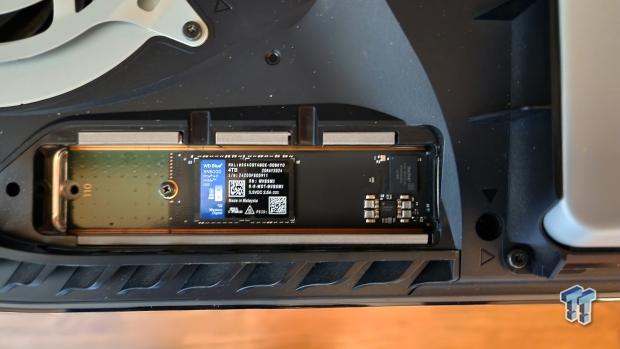
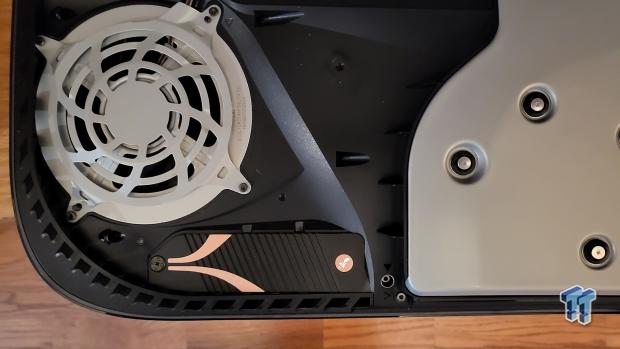
For SSDs that don't have an adequately sized PS5 compatible heatsink or other SSDs where the heatsink provided doesn't fit right and can be removed, we both use and recommend Sabrent's unparalleled PS5 heatsink available HERE.
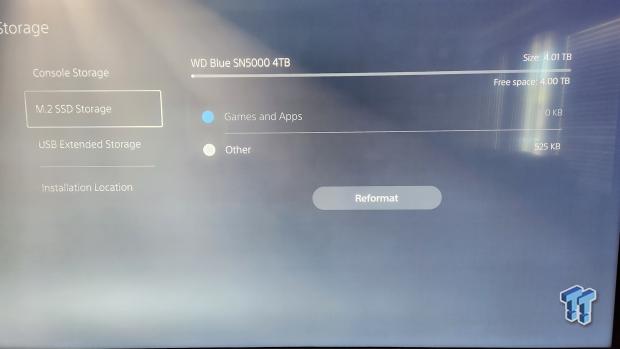
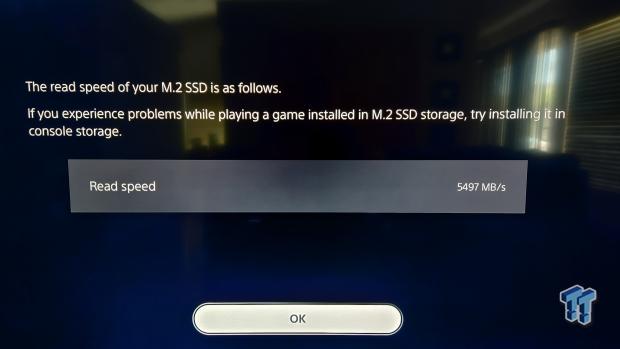
We only chart SSDs that can deliver a minimum of 5,500 MB/s read, which is Sony's original recommendation.
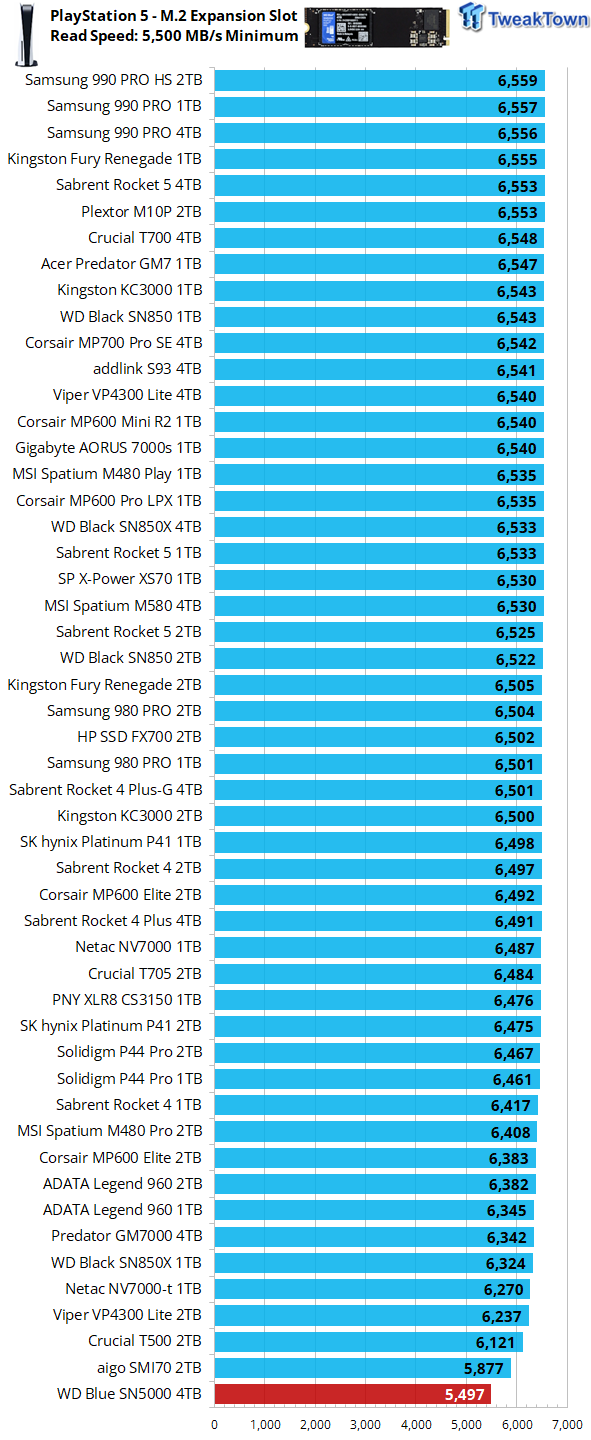
A result here of 5,497 MB/s is close enough to 5,500 MB/s to make the chart and as we see it, verifies the 4TB SN5000 as legit for PS5 storage expansion. Additionally, this thing runs cool, very cool, making it a great choice for this use.
Synthetic Benchmarks: CDM, Anvil, ATTO
CrystalDiskMark

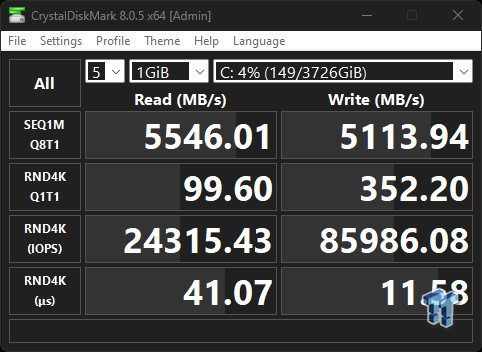
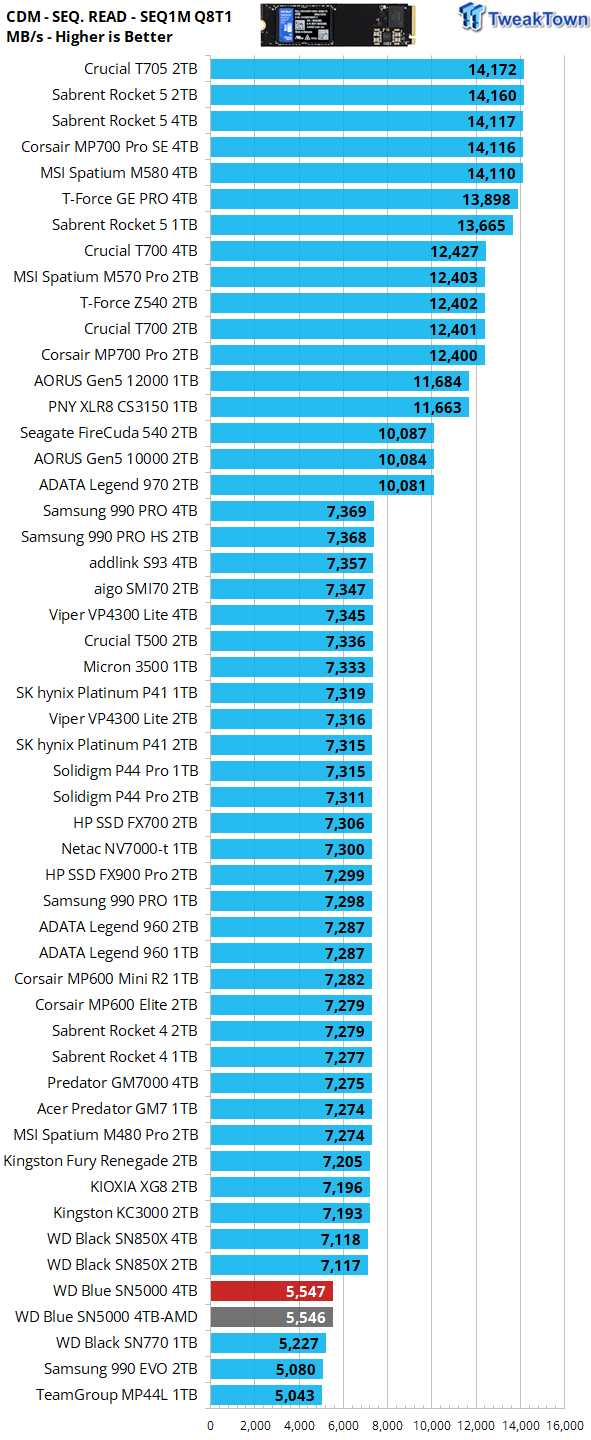
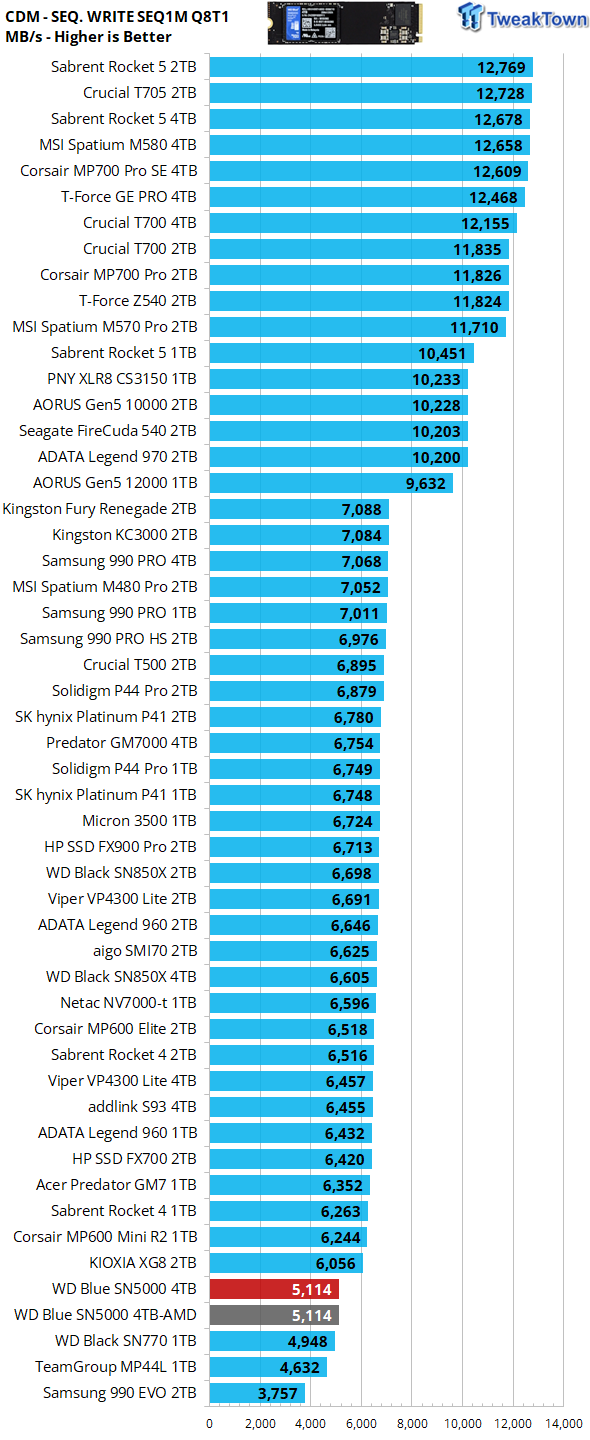
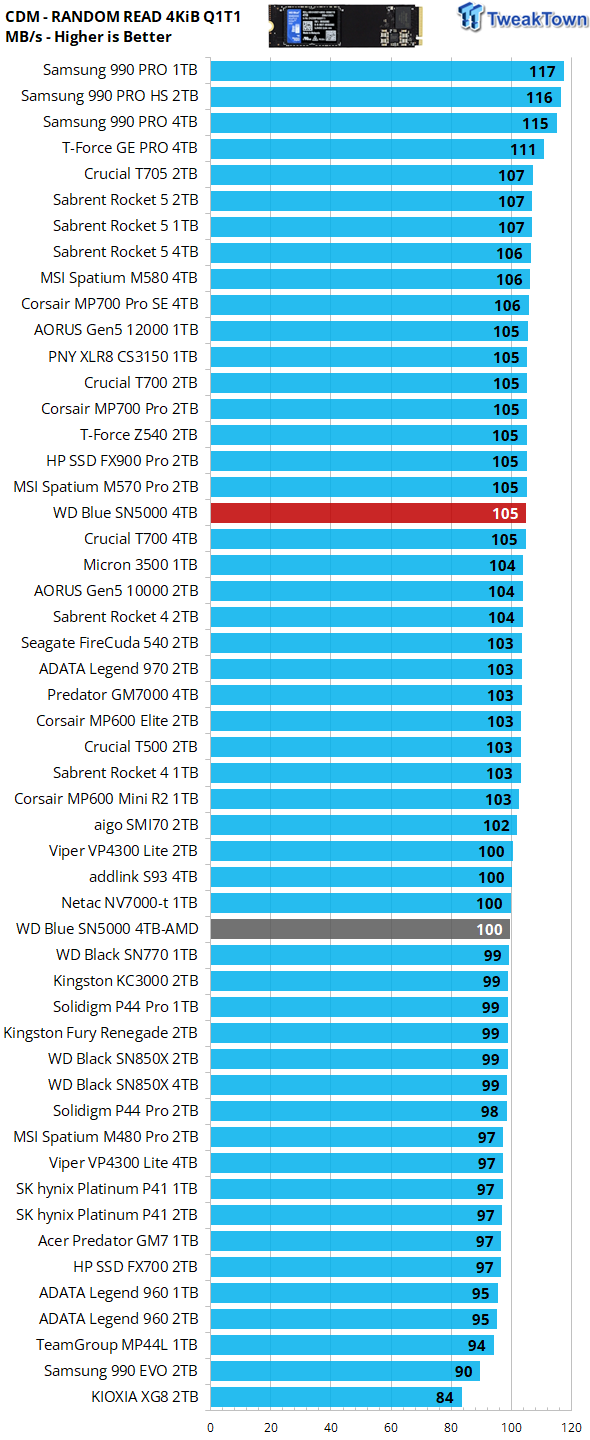
We employ CDM as our standard measurement for both sequential throughput and Q1T1 random read. In terms of sequential throughput, we find our test subject fully capable of exceeding quoted up to factory throughput specifications.
Its massive 105 MB/s throughput at Q1T1 random reads lets us know that real-world performance might indeed be some of the best we've extracted to date from a 4-channel DRAMless SSD.
Anvil's Storage Utilities
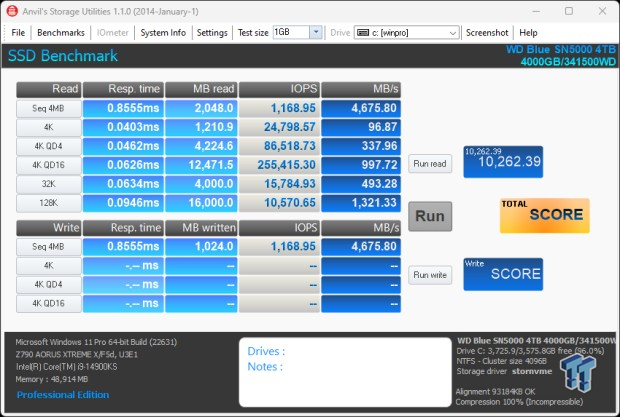
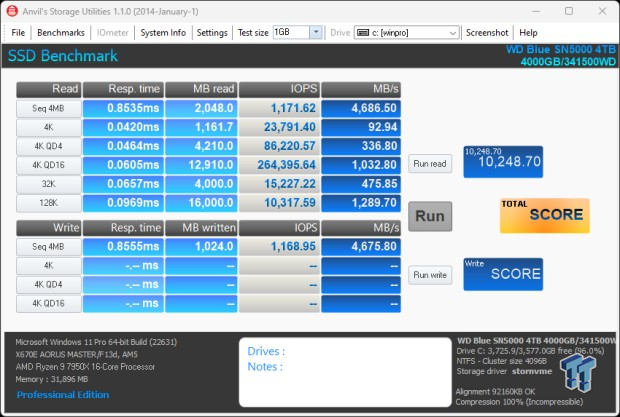
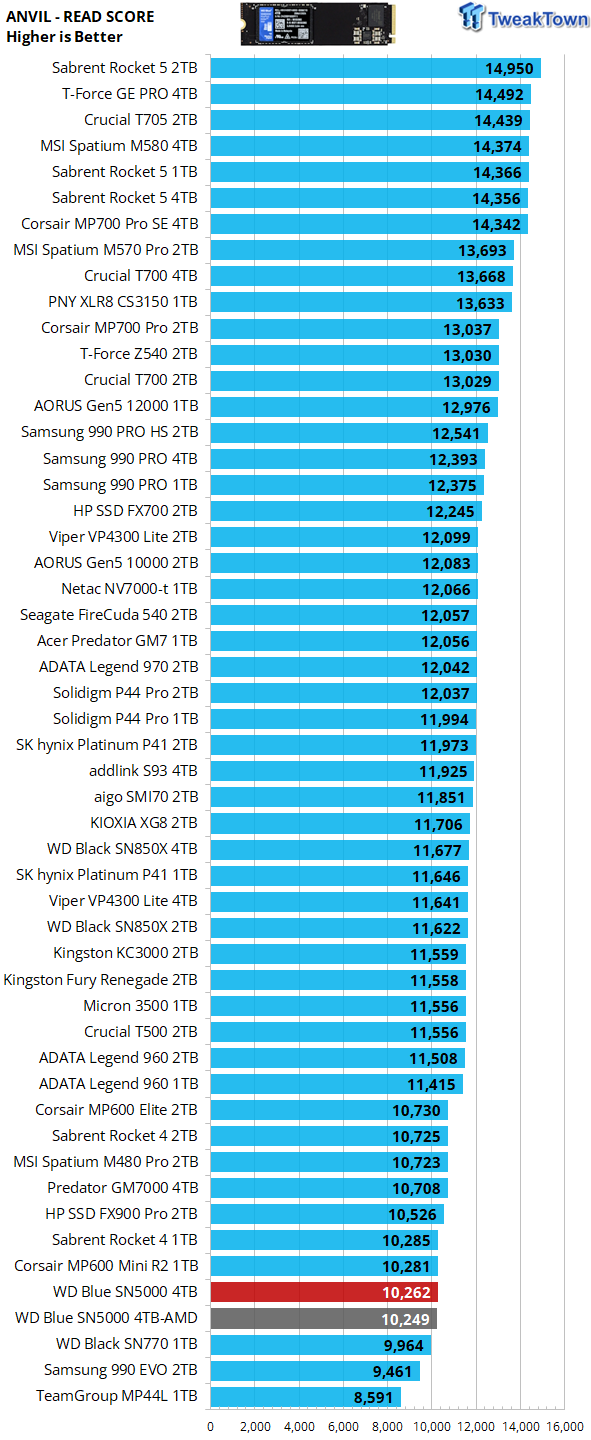
Here much of the score is derived from sequential throughput, making it impossible for a 5,500 MB/s SSD to score as well as a 7,400 MB/s SSD such as the 4TB Viper VP4300 Lite.
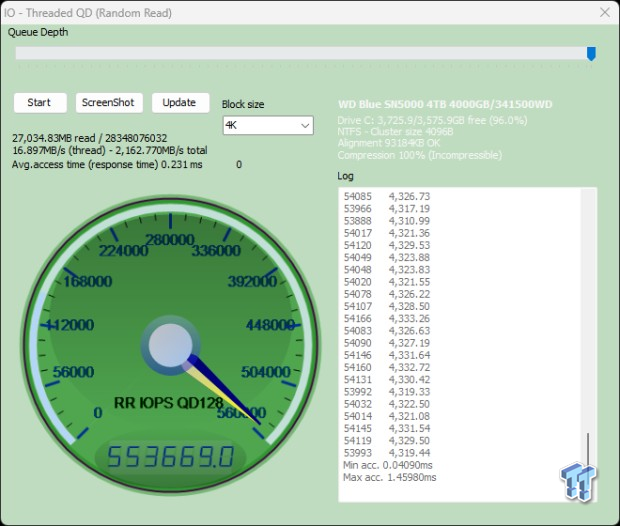
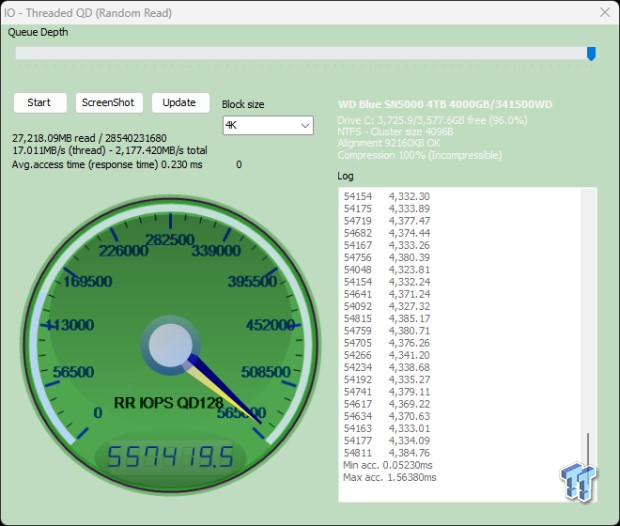
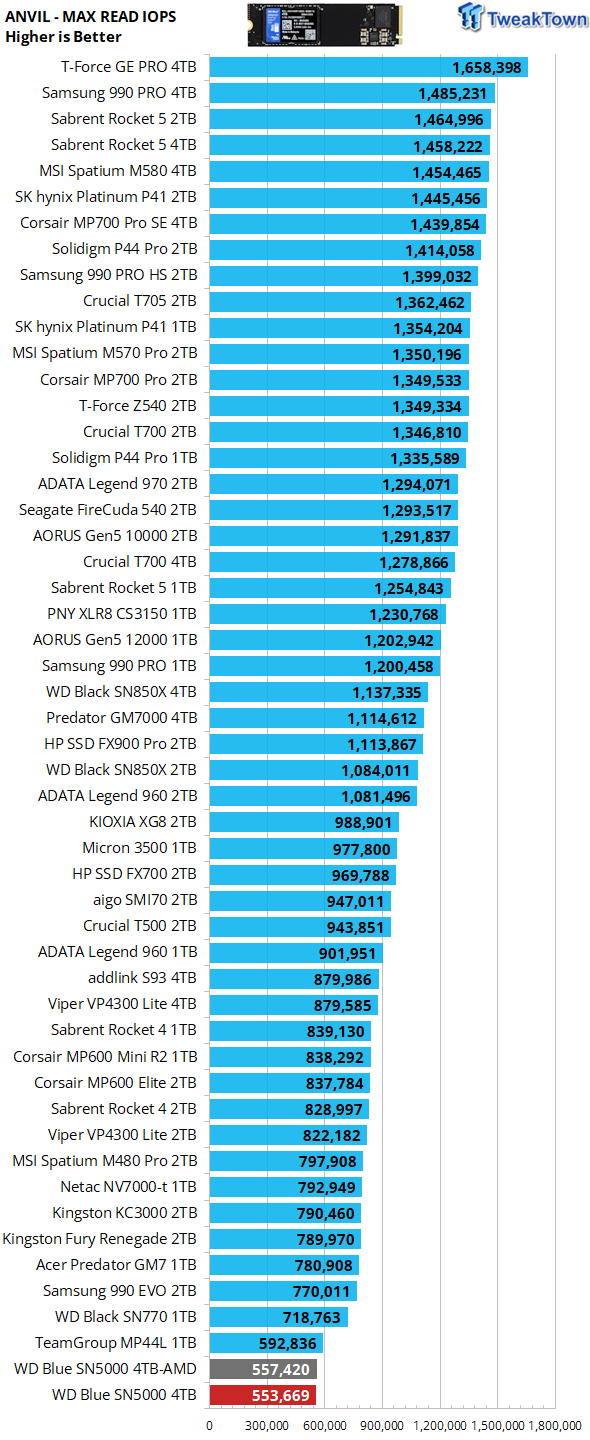
We employ Anvil's random read test as our standard for measuring max random read IOPS. This test is very accurate as it at its core is Iometer skinned over. We test at QD128. At 557K IOPS, we are falling short of the 4TB drive's quoted 690K IOPS. However, no worries as high queue depths are rarely if ever encountered in the consumer space.
ATTO
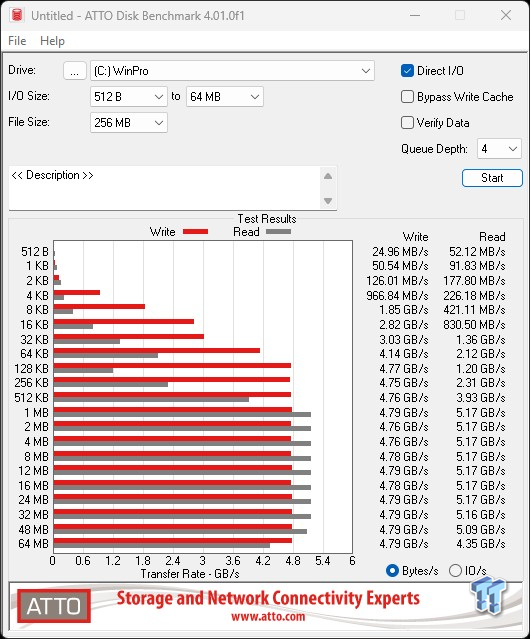
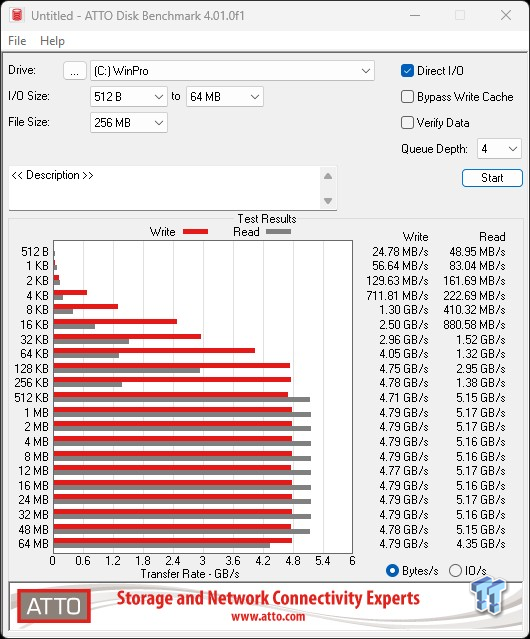
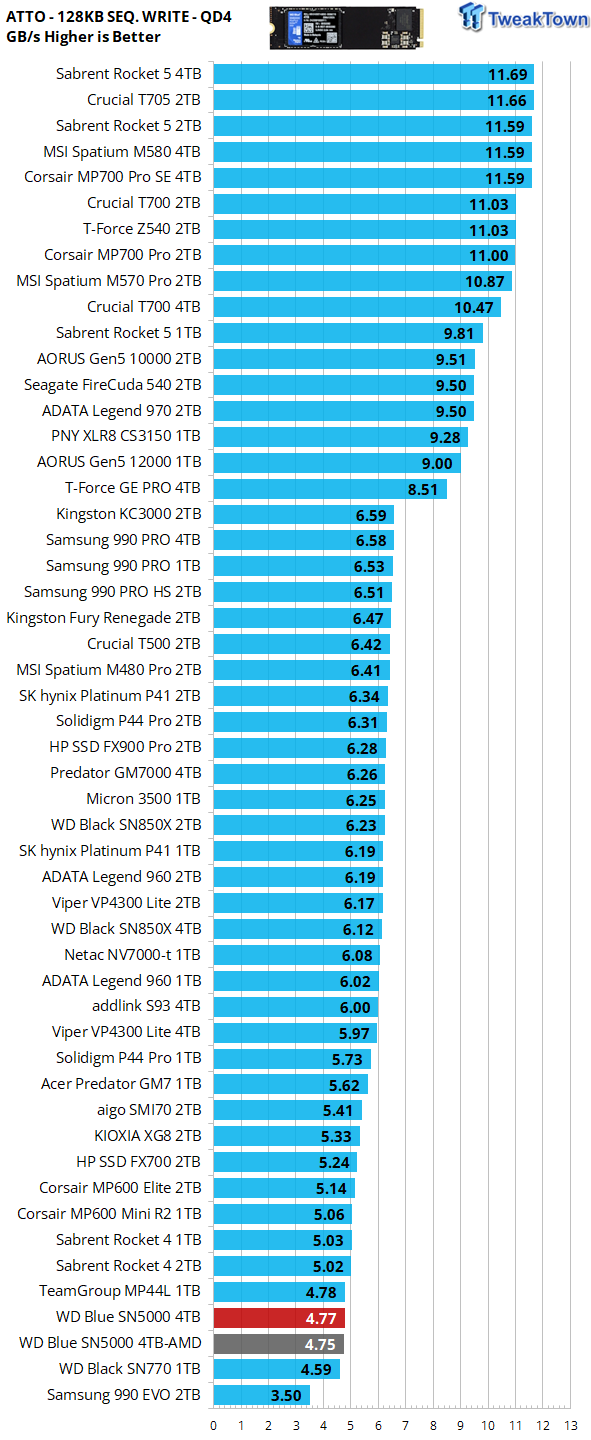
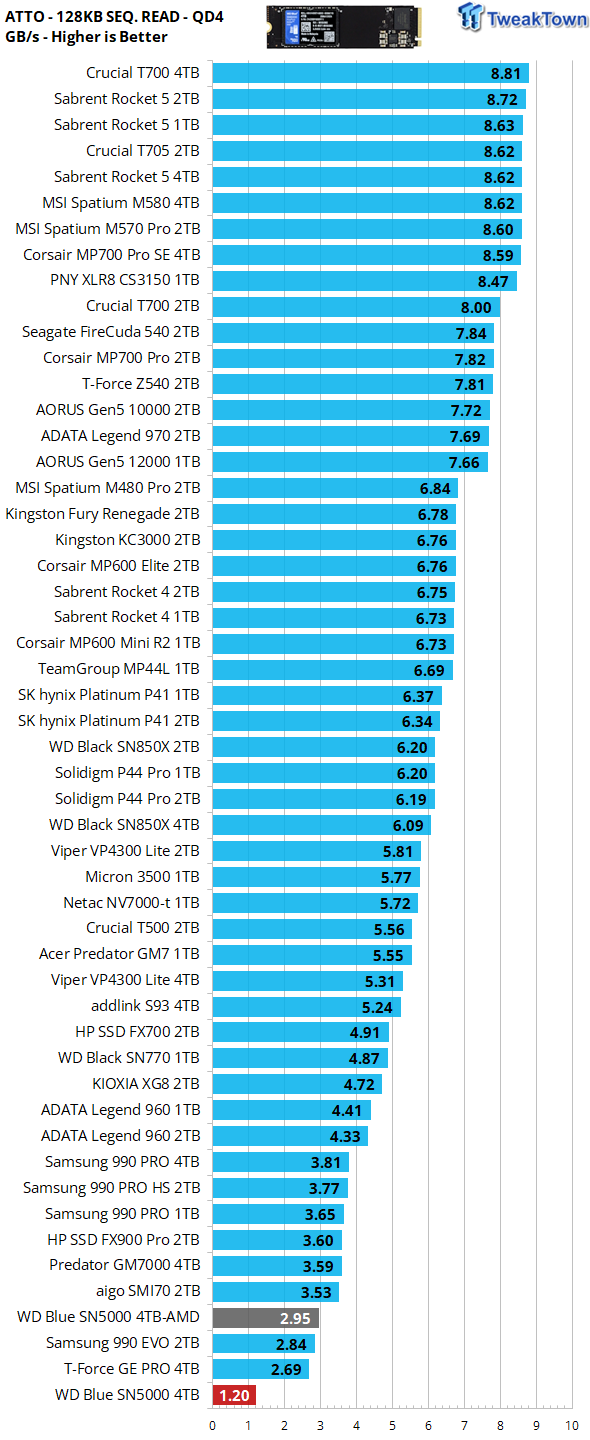
ATTO gives us a clear picture of what transfer sizes a particular SSD favors in terms of QD4 sequential throughput. We chart 128K transfers. At a queue depth of four, the SN5000 4TB favors sequential transfers of 1MB or larger when serving data to the host (reading) and 128KB or larger when programming (writing) data.
Real-World Testing: Transfers, 3DMark SSD Gaming Test, PCM10 Storage
Transfer Rates
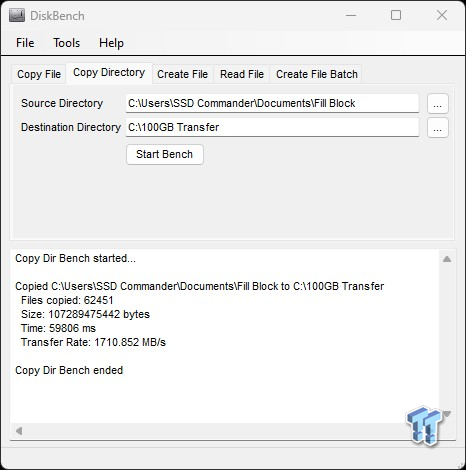
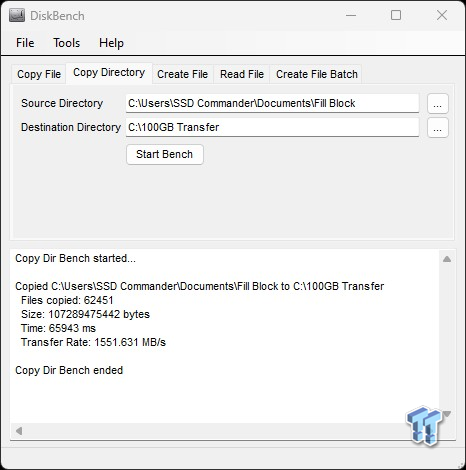
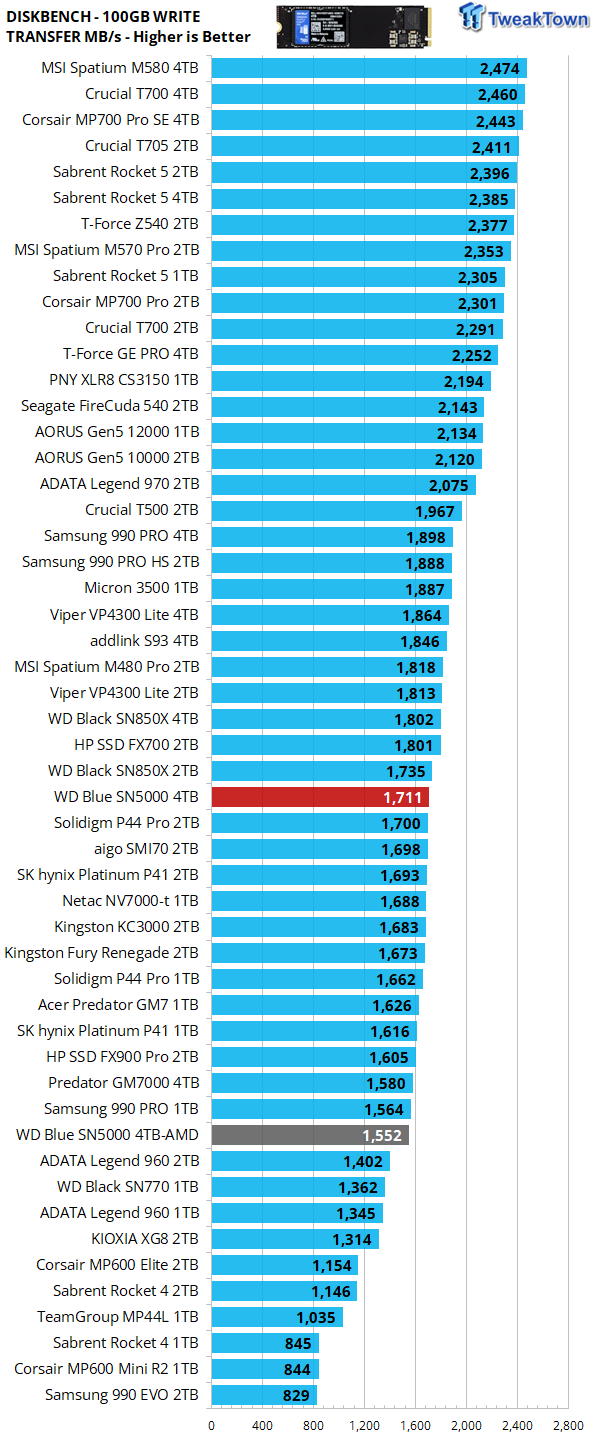
Our 100GB data transfer test is not your ordinary 100GB of data, ours is a crushing mix composed of more than 62K files. Write performance random or sequential, is an infrequent operation and such, we do not consider it to be an important performance metric in the consumer space. An example being how many times is a game installed vs. how many times it's played. A transfer rate of 1,700 MB/s is exceptional for a 5,500 MB/s class SSD, far better than expected.
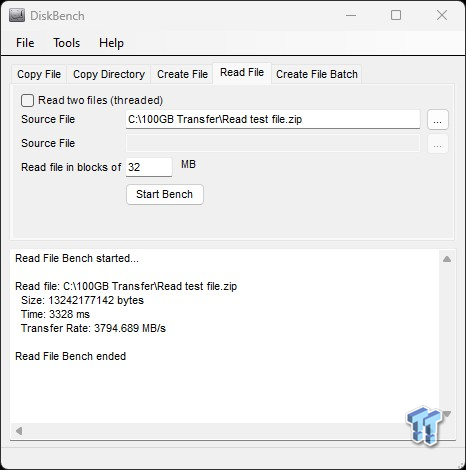
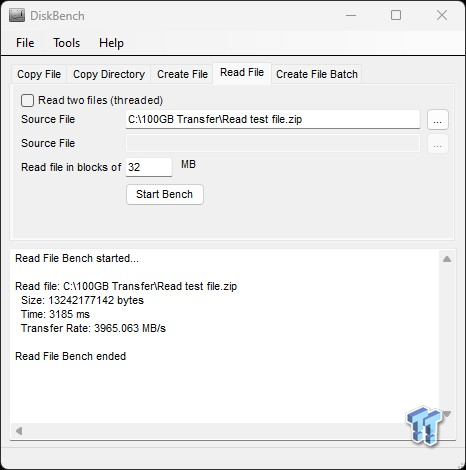
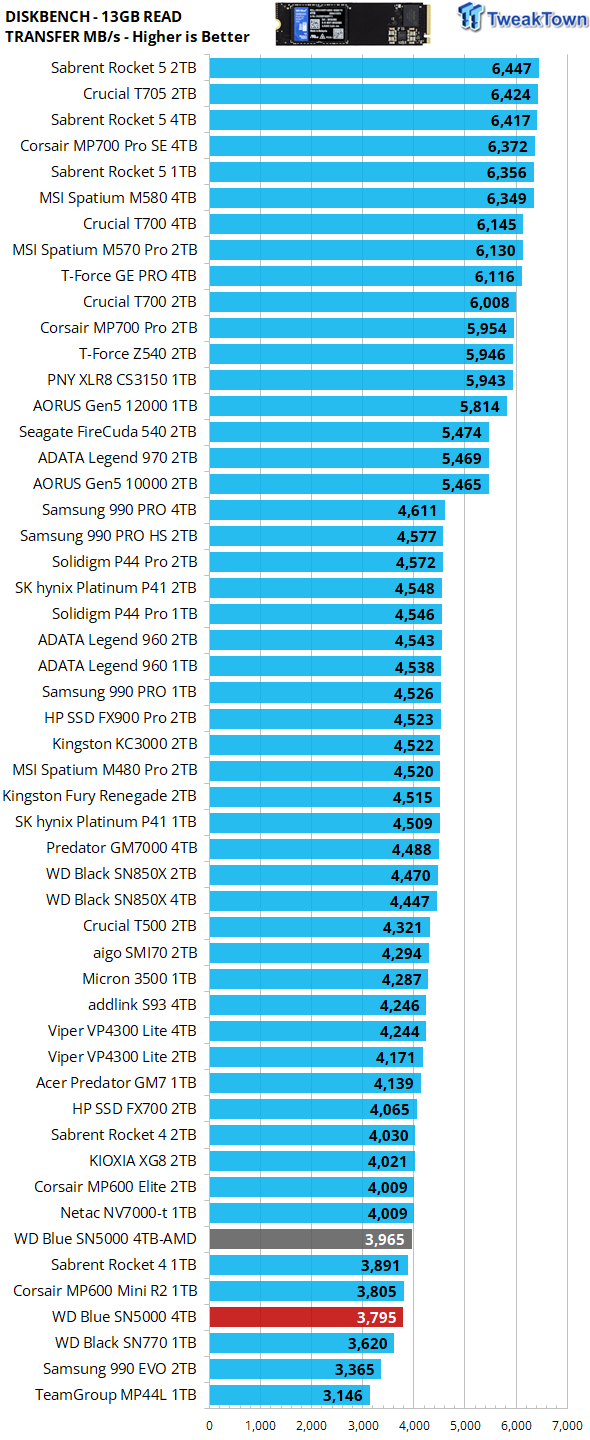
Unlike programming (writing) data, serving data to the host (reading) is typically an important performance metric as it relates to the consumer space. Again, better than expected considering its throughput handicap.
3DMark SSD Gaming Test
UL's newest 3DMark SSD Gaming Test is the most comprehensive SSD gaming test ever devised. We consider it superior to testing against games themselves because, as a trace, it is much more consistent than variations that will occur between runs on the actual game itself. This test is the same as running the actual game, just without the inconsistencies inherent to application testing. In short, we believe that this is the world's best way to test an SSDs gaming prowess and accurately compare it against competing SSDs. The 3DMark SSD Gaming Test measures and scores the following:
- Loading Battlefield V from launch to the main menu.
- Loading Call of Duty Black Ops 4 from launch to the main menu.
- Loading Overwatch from launch to the main menu.
- Recording a 1080p gameplay video at 60 FPS with OBS (Open Broadcaster Software) while playing Overwatch.
- Installing The Outer Worlds from the Epic Games Launcher.
- Saving game progress in The Outer Worlds.
- Copying the Steam folder for Counter-Strike Global Offensive from an external SSD to the system drive.
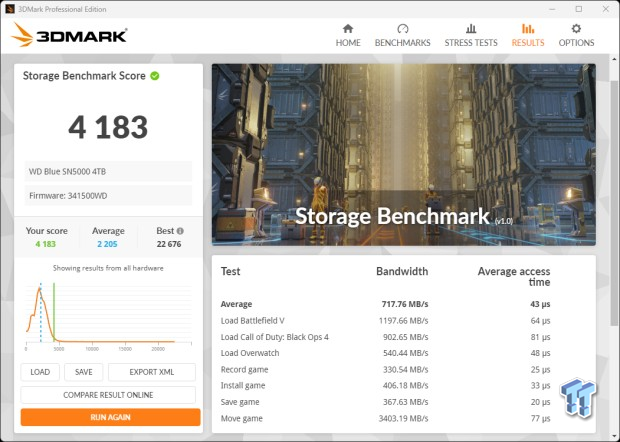
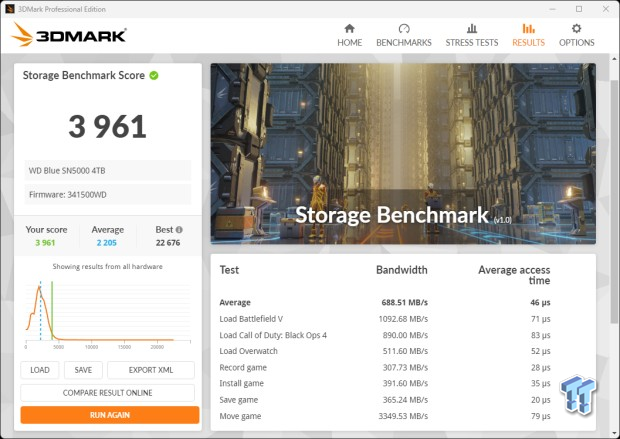
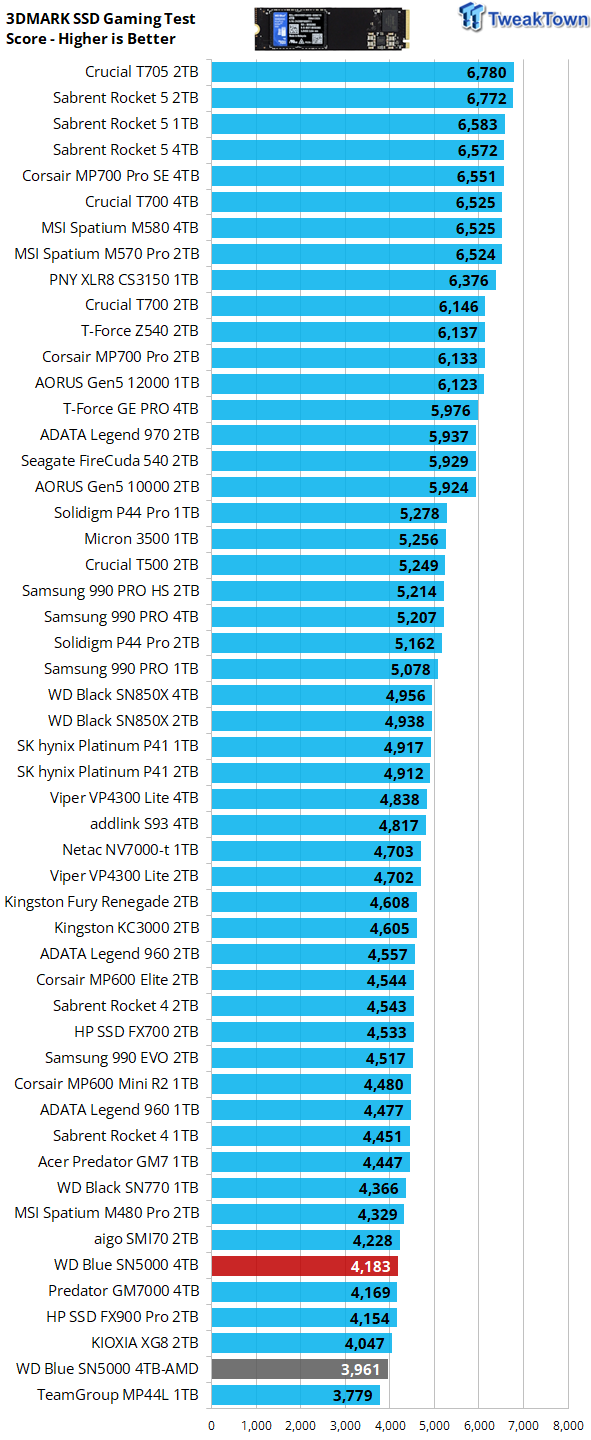
Gaming is a performance metric that matters to most DIY consumers, especially for the enthusiast crowd that TweakTown caters to. Now we've reached the point where results start to matter as they are a direct reflection of user experience.
Here, we find our 4TB contender giving up a little to its Chinese competitors. However, we still consider it to be well within an acceptable range where we consider it to be a competent choice for gaming duties.
PCM10 Storage Tests
PCMark 10 Storage Test is the most advanced and most accurate real-world consumer storage test ever made. There are four different tests you can choose from; we run two of them. The Full System Drive Benchmark and the Quick System Drive Benchmark. The Full System Drive Benchmark writes 204 GB of data over the duration of the test. These tests directly correlate with mainstream user experience.
PCMark 10 Full System Drive Benchmark
This test writes 204GB data and covers a broad range of common consumer tasks, including booting Windows 10, file transfers, Adobe and Office applications, and startup times for games including Battlefield V, COD Black Ops 4, and Overwatch. Unlike synthetic numbers, this is comprehensive real-world data which is why we use it to rank SSDs in terms of user experience.
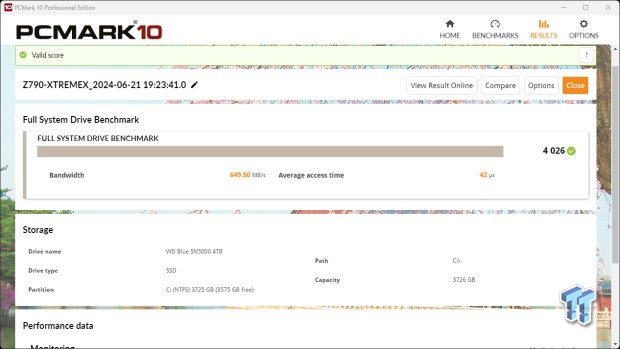
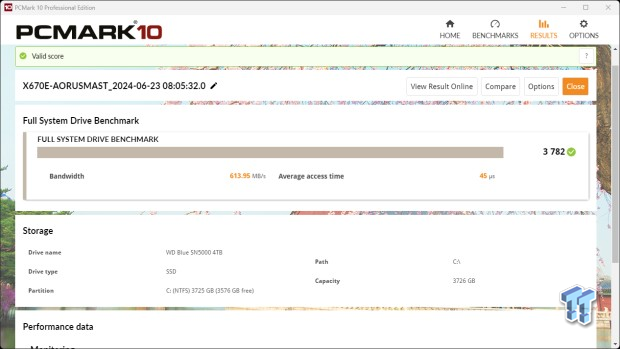
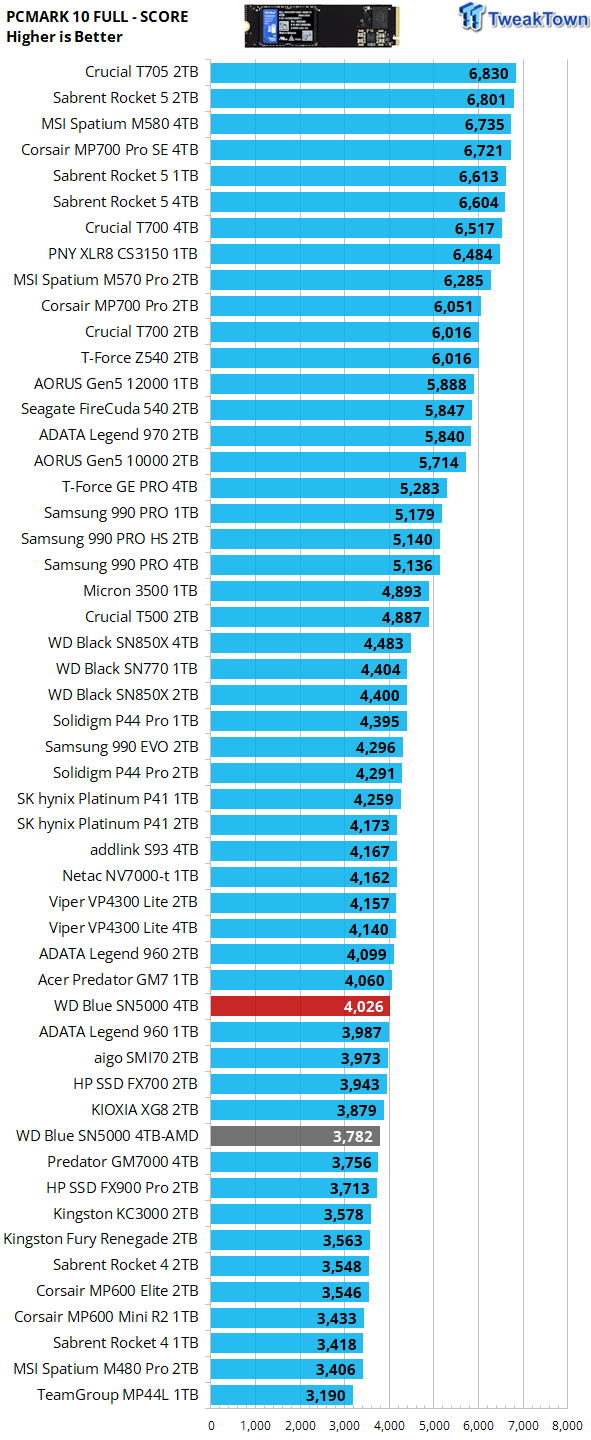
We find its performance here to be exceptional for a QLC arrayed SSD. It's far better than any E18-controlled SSD can muster and right in there with its TLC arrayed Chinese counterparts. Excellent.
PCMark 10 Quick System Drive Benchmark
The Quick System Drive Benchmark writes 23 GB of data over the duration of the test.
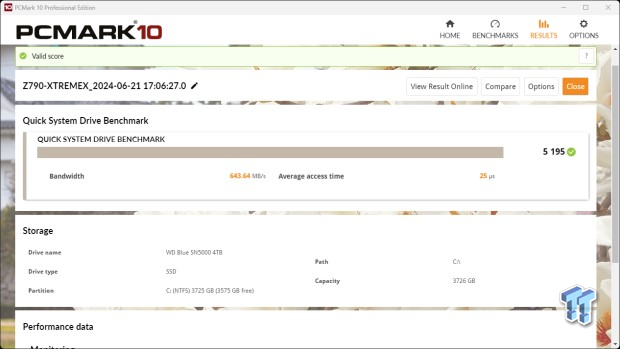
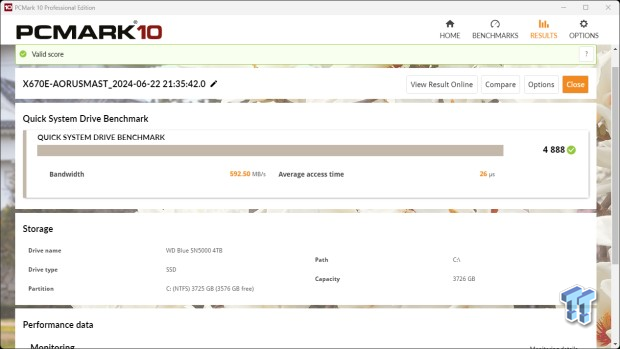
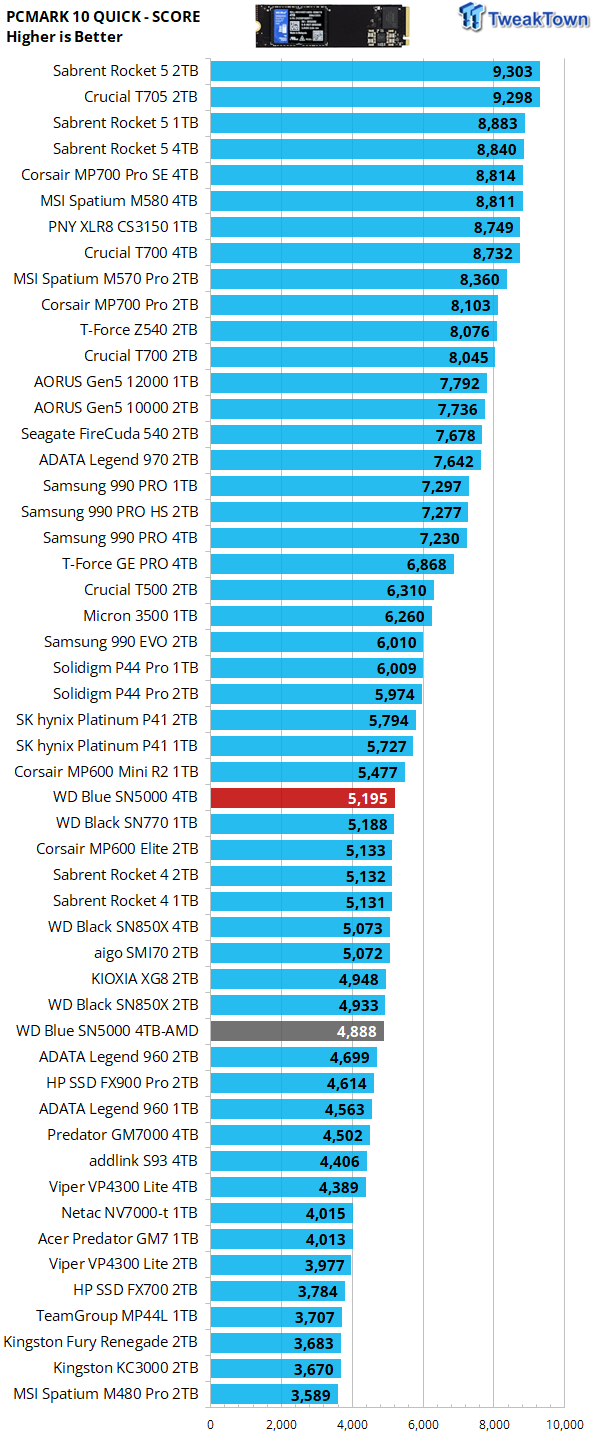
Of all the benchmarks we run, it can be argued that this one offers the best reflection of a typical consumer use case scenario. More than any other benchmark, here is where we want to see excellent numbers and that's exactly what we are getting from our 4TB contender.
A score of 5.1K here is a milestone of sorts that not even the most powerful in WD's arsenal, the SN850X, can achieve and we are getting there with a QLC arrayed SSD. Its Chinese made competition cannot even come close, with only two DRAMless SSDs able to outscore it, and both of those are arrayed with TLC flash. Outstanding.
Final Thoughts
Western Digital's WD Blue SN5000 4TB really won us over. We weren't expecting much considering the drive's 5,500 MB/s throughput cap and QLC flash array, but WD's newest Blue SSD shone brightly, nonetheless. Its performance is on point, as are its physical characteristics. We love it whenever we get a high-capacity single-sided SSD because they can fit where double-sided SSDs cannot, and they are easier to cool. As mentioned, the WD Blue SN5000 4TB is the rarest of the rare in that it is a single sided 4TB SSD. It represents only the third time we've encountered such a beast.
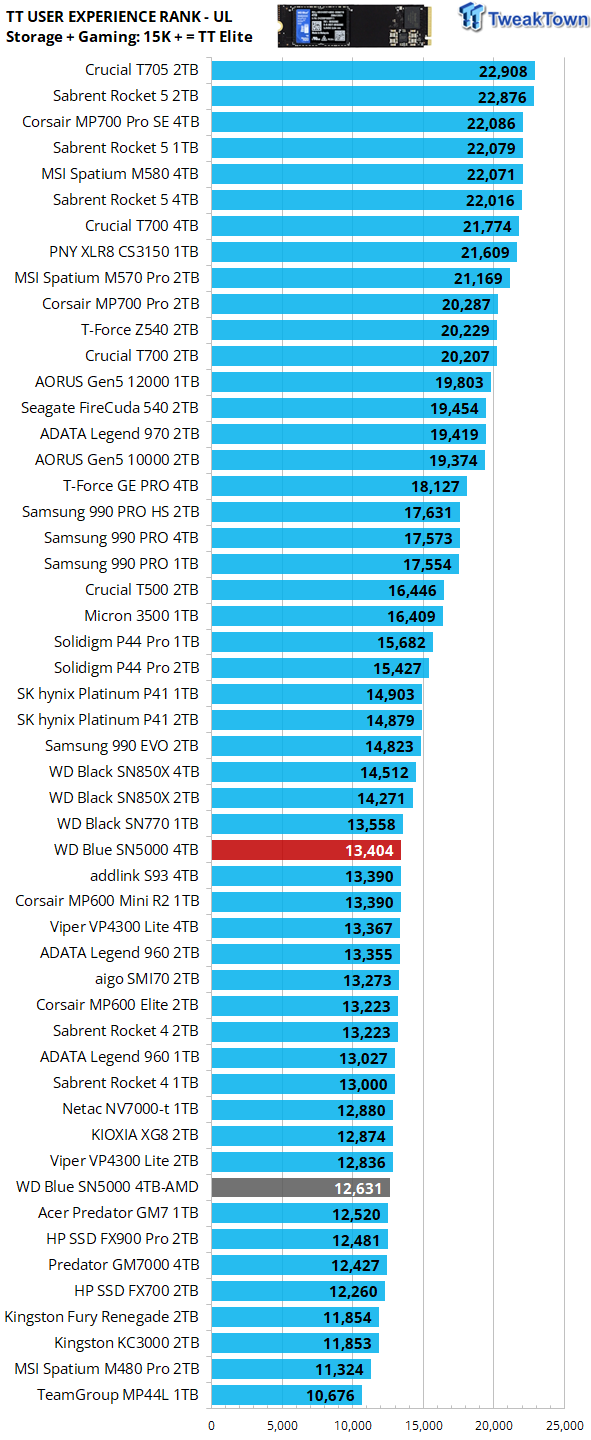
We rank SSDs in terms of overall user experience (performance where it matters most) as expressed by PCMark 10 storage and 3DMark gaming storage tests. Currently, we consider a user experience score of 15K or more to verify an SSD as a TweakTown Elite performer. With a user experience score of 13,404, the 4TB SN5000 is overall the third most powerful DRAMless flash-based SSD we've encountered and simultaneously the best performing 4TB DRAMless SSD we've tested to date. Outstanding.
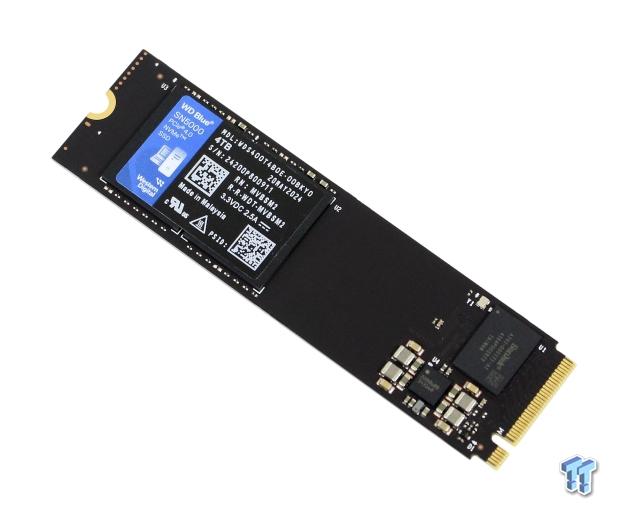
It's the most powerful QLC SSD we've tested to date. It's a single-sided PS5 legit masterpiece and worthy of a Must-Have rating.

